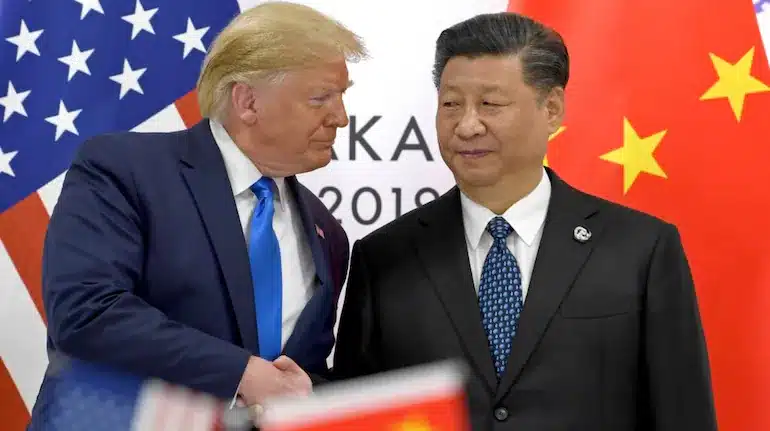US-China Trade War Escalates: Tariffs Surge

In a dramatic escalation of the ongoing trade conflict, President Donald Trump has paused tariffs on most nations while imposing a staggering 125% levy on China. In retaliation, China has announced its own countermeasures, raising tariffs to 84% and vowing to “fight to the end.” As both nations dig in their heels, the implications for the global economy are profound.
China Calls for Dialogue Amidst Rising Tensions
China’s response to the latest round of tariffs has been swift and assertive. On Thursday, the Chinese commerce ministry urged the United States to engage in dialogue, emphasizing the need for mutual respect and equality in negotiations. Spokeswoman He Yongqian stated, “The door to dialogue is open,” but underscored that the U.S. tariffs undermine the global trading system and threaten economic stability. Foreign ministry spokesman Lin Jian echoed these sentiments, condemning the tariffs as a violation of international norms and asserting that China would defend its economic interests vigorously.
The escalating trade war has entered a new phase, with both countries representing nearly 40% of global GDP and over a quarter of global trade. The stakes are high, as a breakdown in relations could lead to widespread disruptions in the global economy.
The Broader Economic Impact
The ramifications of the U.S.-China trade war extend far beyond tariffs. Global supply chains are already feeling the strain, with many multinational companies reconsidering their sourcing strategies. Industries ranging from technology to pharmaceuticals face increased costs and potential delays as they navigate the new tariff landscape.
Economists warn that prolonged tariffs could lead to inflation in the U.S., as prices for consumer goods rise. Households and businesses are beginning to feel the financial pinch, raising concerns about a potential recession. Meanwhile, China’s economy is still recovering from previous challenges, including a property sector collapse and high youth unemployment. The trade war threatens to exacerbate these issues, particularly as exports become increasingly vulnerable.
Strategic Endurance: China’s Long-Term Approach
Chinese President Xi Jinping is preparing for a prolonged confrontation, signaling that China will not yield to U.S. pressure. State media has adopted a nationalist tone, framing the trade war as a patriotic struggle. Analysts suggest that Xi’s strategy is built on long-term endurance, with China having spent years reducing its economic dependence on the U.S.
Since the onset of the trade conflict, China’s exports to the U.S. have decreased significantly, and manufacturers have shifted operations to countries like Vietnam to avoid tariffs. Additionally, China has bolstered its domestic industries in high-tech sectors, aiming to innovate and reduce reliance on American technology.
The Diplomatic Landscape: A Game of Wills
As the trade war intensifies, the diplomatic landscape has shifted dramatically. Trump’s unilateral approach to trade negotiations has left China uncertain about whom to engage with for discussions. Meanwhile, Xi’s consolidation of power has limited China’s diplomatic flexibility, making it challenging to find common ground.
Both leaders are now entrenched in their positions, with Trump framing the trade war as a fight for economic justice and Xi promoting a narrative of resilience against Western pressure. This deadlock raises the risk of further escalation, as neither side appears willing to back down.
Observer Voice is the one stop site for National, International news, Sports, Editor’s Choice, Art/culture contents, Quotes and much more. We also cover historical contents. Historical contents includes World History, Indian History, and what happened today. The website also covers Entertainment across the India and World.

